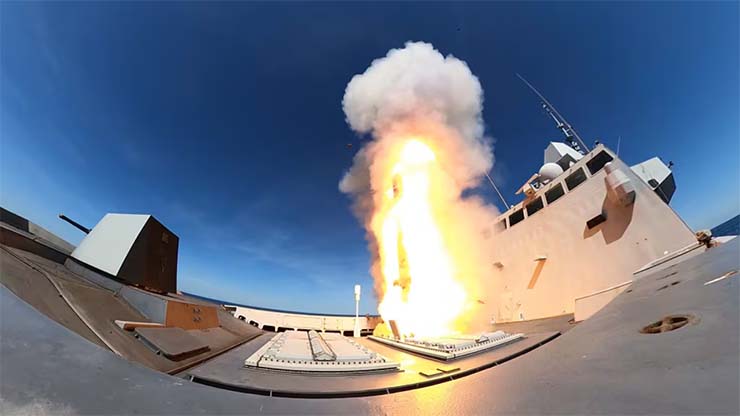
Paris: France’s synchronised test firing of naval cruise missiles from a surface ship and a submarine 400 kilometres apart adds a land-attack capability for European navies that may be more difficult for air defences to counter, media reports said.
The French frigate Aquitaine and a Suffren-class nuclear-powered attack submarine, sailing near Quimper and Biscarosse, respectively, last week each fired a Missile de Croisière Naval or MdCN that simultaneously hit a target at a military testing site in south-west France, a first for the French Navy.
Coordinated cruise missile strikes could be used to saturate adversary defence systems, raising the chance of a successful hit on defended targets in a high-intensity context, the French Navy said in statement.
The synchronised double shot of the domestically developed MdCN relied on existing systems and software, the service said.
The French Navy’s coordinated launch from different platforms “is a notable development,” said Nick Childs, senior fellow for Naval Forces and Maritime Security at the International Institute for Strategic Studies in London. “Being able to carry out strikes from different platforms in different locations at the same time complicates the air-defence challenge for the opponent.”
The synchronised cruise-missile firing is “something special,” as few navies in Europe perform land strikes, said Sebastian Bruns, senior researcher at the Institute for Security Policy Kiel University (ISPK). He said the exercise is “more of a capability demonstrator,” meant to validate the technology and telegraph the implications to would-be adversaries at the same time.
The MdCN is France’s answer to the US – made Tomahawk, and was developed by pan-European missile maker MBDA following a contract in 2006. The naval cruise missile entered service in 2017 and was used operationally by France for the first time in strikes against Syria in 2018.








